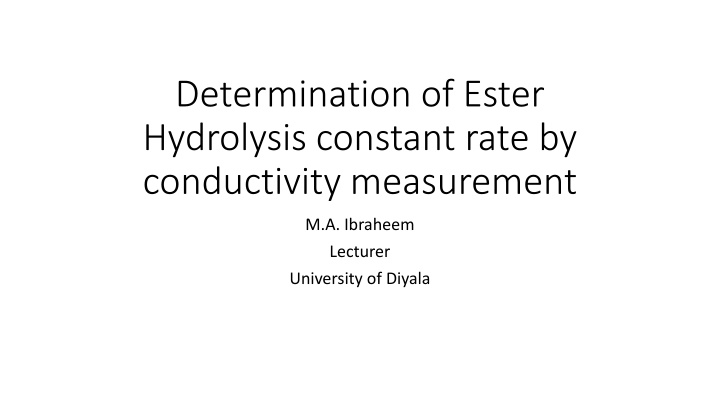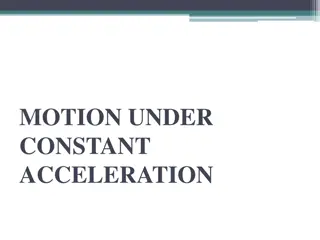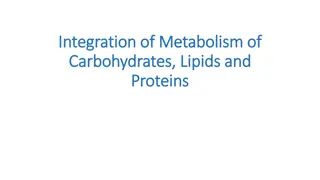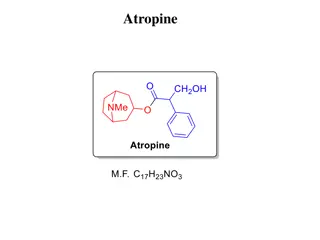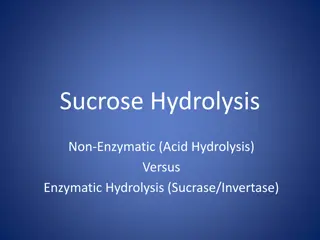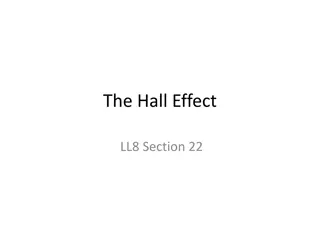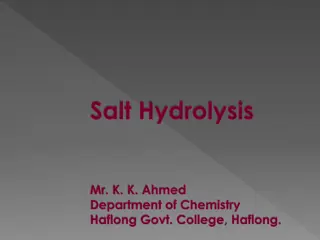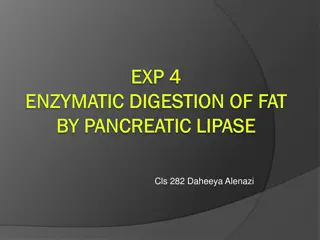Determination of Ester Hydrolysis Constant Rate by Conductivity Measurement
This study focuses on determining the ester hydrolysis constant rate through conductivity measurement, presenting a second-order reaction example. Conductivity meter is utilized for accurate monitoring. The procedure involves utilizing equal concentrations of ester and sodium hydroxide, measuring conductivity values, and calculating molar conductivity. A graph is plotted to determine the rate constant.
Download Presentation

Please find below an Image/Link to download the presentation.
The content on the website is provided AS IS for your information and personal use only. It may not be sold, licensed, or shared on other websites without obtaining consent from the author.If you encounter any issues during the download, it is possible that the publisher has removed the file from their server.
You are allowed to download the files provided on this website for personal or commercial use, subject to the condition that they are used lawfully. All files are the property of their respective owners.
The content on the website is provided AS IS for your information and personal use only. It may not be sold, licensed, or shared on other websites without obtaining consent from the author.
E N D
Presentation Transcript
Determination of Ester Hydrolysis constant rate by conductivity measurement M.A. Ibraheem Lecturer University of Diyala
introduction Hydrolysis of an ester by an alkali has been studied in many occasions as an example of a second order reaction where the rate is directly proportional to both reactants concentration. To get more accurate results rather than the classical titration method . It is possible to track the reaction with a conductivity meter The conductivity of the reaction mixture will not reach to zero where at the beginning the Sodium hydroxide ions are the main contributors of the solution conductivity afterward with reaction proceed the amount of these highly conductive species will reduce but another contribution will appear as the formation of Sodium acetate.
To simplify the calculation we will use an equal amount (concentration) of both the ester and Sodium hydroxide Therefore we can write ?2=1 ? ? ? .. 1 ? And to describe these variable according to the conductivity measurement we can write ? = ? ? = ? ? ? ? = ?- ?2=1 ? ? . 2 ? 1 . ? ? ?= + .. 3 ?2 ? ?
Procedure Note : the cell constant for the instrument is 0.1 cm-1 1. Measure the conductivity of the distilled water and the value should substrated from all later measurement value through the reaction, make sure all the unites of the conductivity are the same (micro or milli S) 2. Obtain the conductivity value of (0.025M) of NaOH which will use to calculate the ?. 3. Measure the conductivity of (0.025M) solution of sodium acetate , the value will use to calculate
4. Take 25 ml of 0.5M of both the reactant and mix together in a beaker and stir the mixture. Moreover start the timing of the reaction 5. Wash the electrode of the conductivity meter with few millilitre of reaction mixture 6. Take the conductivity of the reaction at specific times , then calculate the molar conductivity of it which will represent the values of ? Results Make table like below t(min) ? ? ? ? ? 3 6 9 12 15
Draw a graph between ?? the rate constant K and ? and from the slope obtain the value of ?
